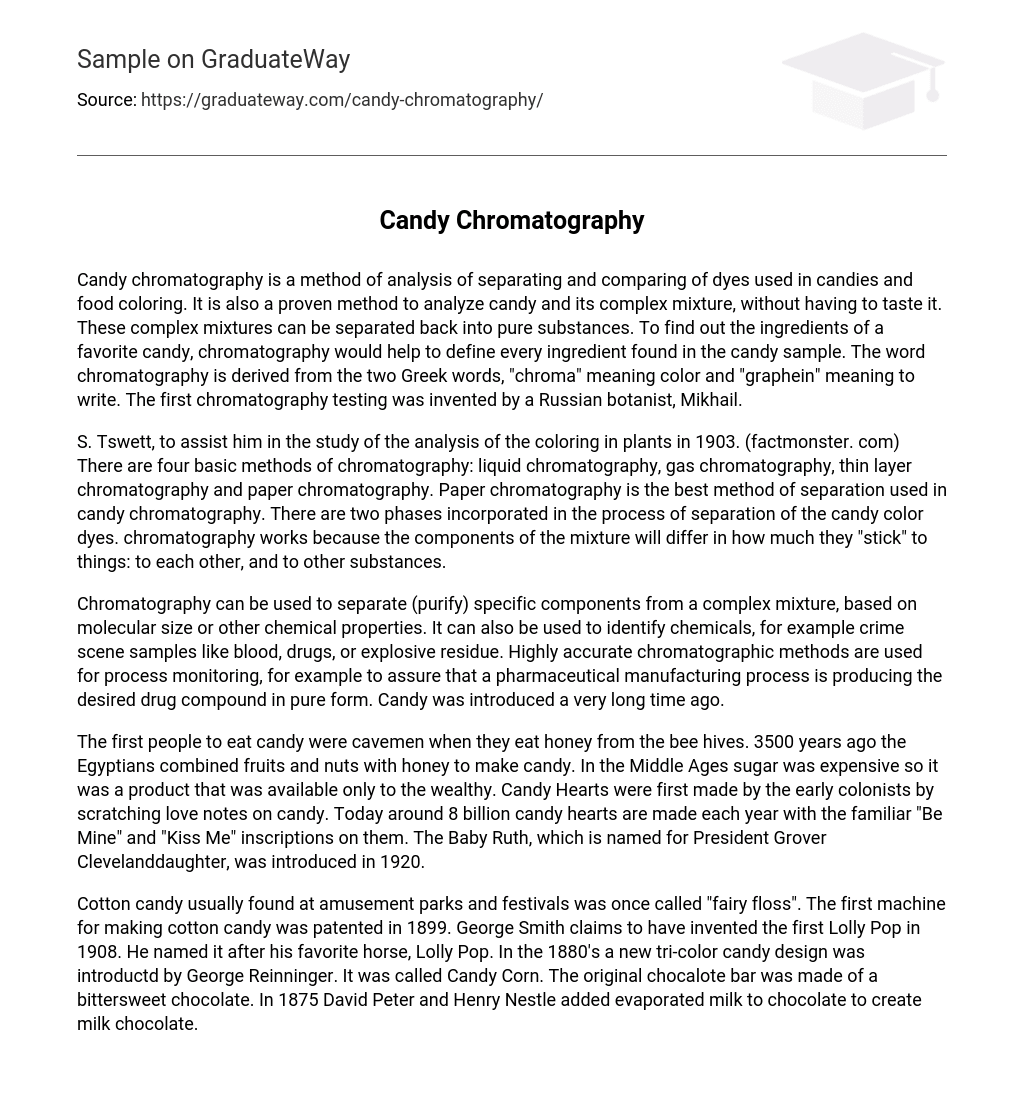Candy chromatography is a method of analysis of separating and comparing of dyes used in candies and food coloring. It is also a proven method to analyze candy and its complex mixture, without having to taste it. These complex mixtures can be separated back into pure substances. To find out the ingredients of a favorite candy, chromatography would help to define every ingredient found in the candy sample. The word chromatography is derived from the two Greek words, “chroma” meaning color and “graphein” meaning to write. The first chromatography testing was invented by a Russian botanist, Mikhail.
S. Tswett, to assist him in the study of the analysis of the coloring in plants in 1903. (factmonster. com) There are four basic methods of chromatography: liquid chromatography, gas chromatography, thin layer chromatography and paper chromatography. Paper chromatography is the best method of separation used in candy chromatography. There are two phases incorporated in the process of separation of the candy color dyes. chromatography works because the components of the mixture will differ in how much they “stick” to things: to each other, and to other substances.
Chromatography can be used to separate (purify) specific components from a complex mixture, based on molecular size or other chemical properties. It can also be used to identify chemicals, for example crime scene samples like blood, drugs, or explosive residue. Highly accurate chromatographic methods are used for process monitoring, for example to assure that a pharmaceutical manufacturing process is producing the desired drug compound in pure form. Candy was introduced a very long time ago.
The first people to eat candy were cavemen when they eat honey from the bee hives. 3500 years ago the Egyptians combined fruits and nuts with honey to make candy. In the Middle Ages sugar was expensive so it was a product that was available only to the wealthy. Candy Hearts were first made by the early colonists by scratching love notes on candy. Today around 8 billion candy hearts are made each year with the familiar “Be Mine” and “Kiss Me” inscriptions on them. The Baby Ruth, which is named for President Grover Clevelanddaughter, was introduced in 1920.
Cotton candy usually found at amusement parks and festivals was once called “fairy floss”. The first machine for making cotton candy was patented in 1899. George Smith claims to have invented the first Lolly Pop in 1908. He named it after his favorite horse, Lolly Pop. In the 1880’s a new tri-color candy design was introductd by George Reinninger. It was called Candy Corn. The original chocalote bar was made of a bittersweet chocolate. In 1875 David Peter and Henry Nestle added evaporated milk to chocolate to create milk chocolate.





